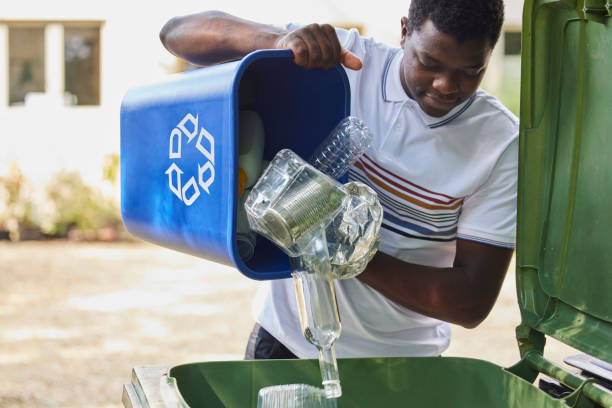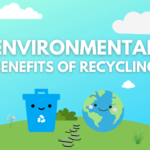Understanding the critical role that recycling plays in conserving resources and reducing the impact of waste on our planet. It’s not just a responsibility but also an opportunity for individuals and households to make a significant difference.
Recycling at home is a small change that makes a big difference for our planet.
Getting started with recycling at home is easy and impactful. Begin by checking your local recycling guidelines to know what can be recycled in your area. Create a dedicated recycling station in a convenient spot, label bins for different materials, and educate your household about proper recycling practices. Rinse containers, avoid plastic bags, and stay informed about any updates to your local program. Reduce waste, choose reusable items, and encourage others to join in.
In this comprehensive guide, I’ll provide practical, science-backed advice on how you can get started with recycling at home.
Understanding the Basics
Before we delve into the “how,” it’s essential to understand the “what” and “why” of recycling.
- What is Recycling? Recycling is like giving a second life to materials that would otherwise end up in the trash. It involves collecting and processing used items and turning them into new products.
- Why Recycle? Recycling conserves natural resources, reduces energy consumption, lowers greenhouse gas emissions, and minimizes the burden on landfills. It’s a crucial part of sustainable living.
Step 1: Know What You Can Recycle
Recycling is like a puzzle; you need to know which pieces fit. Here’s how to identify recyclable materials:
- Check Local Guidelines: Recycling programs vary by location, so start by checking your local recycling guidelines. Your city or municipality’s website is an excellent place to find this information.
- Label Inspection: Many products have recycling labels that indicate whether they can be recycled. Common symbols include the recycling arrow and a number, which corresponds to the type of plastic.
- Know the Basics: Generally, common recyclables include paper, cardboard, glass, aluminum, and certain types of plastic containers. Avoid contamination by not putting non-recyclables, like plastic bags, in the recycling bin.
Step 2: Set Up a Recycling Station
Now that you know what to recycle, let’s create a dedicated recycling area in your home.
- Choose a Location: Find a convenient spot in your home, such as the kitchen or garage, to set up your recycling station. It should be easily accessible to all household members.
- Containers and Bins: Use separate bins or containers to sort recyclables. Label them clearly for paper, plastic, glass, and aluminum. This makes it easy for everyone to know where to put items.
- Educate Your Family: Ensure that everyone in your household knows how to use the recycling station correctly. Teach them what can and cannot be recycled.
Step 3: Reduce Contamination
Contamination is like a villain in the recycling world. When non-recyclable items end up in the recycling bin, it can spoil the entire load.
- Rinse Containers: Before placing recyclables in the bin, give them a quick rinse to remove any food residue. It doesn’t have to be spotless, but it should be clean.
- No Plastic Bags: Avoid putting recyclables in plastic bags within the recycling bin. Plastic bags can jam recycling machines and cause problems at recycling facilities. Instead, reuse or recycle plastic bags separately at designated drop-off locations.
- Check for Hazardous Materials: Certain items, like batteries and electronics, should not be placed in your regular recycling bin. These can be hazardous and require special recycling procedures.
Step 4: Stay Informed and Updated
Recycling is like a changing landscape; it’s essential to keep up with the latest developments.
- Follow Local Updates: Stay informed about any changes or updates in your local recycling program. Guidelines may evolve over time.
- Educate Yourself: Continuously educate yourself and your family about recycling best practices. Knowledge is a powerful tool in the recycling process.
Step 5: Reduce and Reuse:
Recycling is a valuable step, but it’s not the only one. Reducing and reusing are equally important.
- Reduce Waste: Try to reduce waste by making conscious choices. Buy products with minimal packaging, choose reusable items over disposable ones, and avoid single-use plastics.
- Reuse Items: Before tossing something in the recycling bin, consider whether it can be reused. Old containers, jars, and even clothing can often find new purposes in your home.
Step 6: Encourage Others
Recycling is like a team sport; it’s more effective when more people participate.
- Lead by Example: Show your friends and family how easy and impactful recycling can be. Your enthusiasm can inspire others to follow suit.
- Share Information: Share recycling information and tips with your social network. The more people who know about proper recycling, the better.
Common Recycling Questions Answered
Now, let’s address some common recycling questions:
- Can I recycle shredded paper? Yes, you can, but it’s best to place shredded paper in a paper bag before recycling to prevent it from creating a mess at the recycling facility.
- Should I remove labels from containers? Most labels are removed during the recycling process, so you don’t need to remove them. However, if a label is made of a different material (e.g., plastic on a glass container), it’s a good idea to remove it.
- Can I recycle pizza boxes? Pizza boxes can be recycled if they are clean and free of food residue. If they’re greasy or have food stuck to them, it’s better to compost them if your local program allows it.
Conclusion:
Recycling at home is like taking a small step that leads to a giant leap for the environment. By following these steps, staying informed, and encouraging others, you can make a meaningful contribution to the sustainability of our planet. Remember, recycling is not just a duty; it’s a privilege and an opportunity to leave a better world for future generations.


